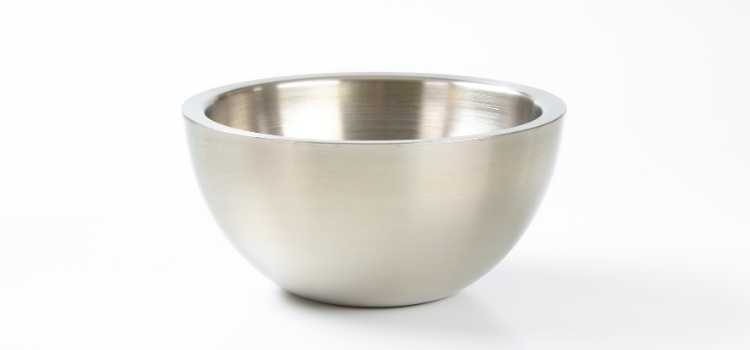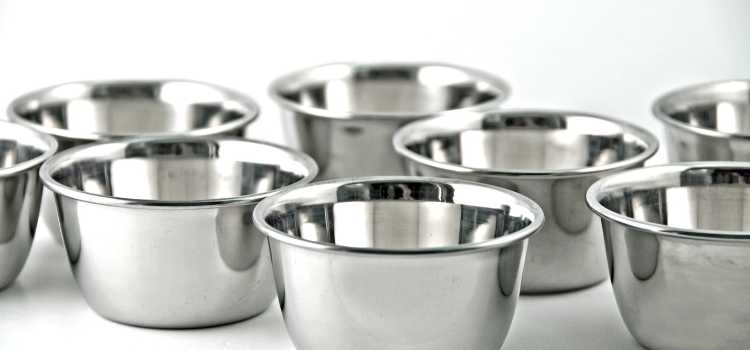As an Amazon Associate, I earn from qualifying purchases

Metal bowls are a staple in many kitchens, appreciated for their durability and versatility. From mixing ingredients to serving dishes, metal bowls play a vital role in various culinary tasks. However, when it comes to using these bowls in the oven, many home cooks express uncertainty about their safety and suitability.
Knowing whether metal bowls can endure oven temperatures without causing damage or affecting food safety is essential for anyone keen on maximizing their kitchen tools’ potential.
Types of Metal Bowls
Common Materials: Stainless Steel, Aluminum, Copper
Metal bowls are commonly made from stainless steel, aluminum, and copper, each offering unique advantages and characteristics that influence their oven usability.
- Stainless Steel: Known for its strength and resistance to corrosion, stainless steel is a popular choice. It can generally withstand high temperatures, making it suitable for many oven applications. However, it heats unevenly, which can affect cooking outcomes.
- Aluminum: Lightweight and a good conductor of heat, aluminum bowls are favored for their quick heating properties. However, they may react with acidic foods and can warp at higher temperatures if not made from heavy-gauge aluminum designed for oven use.
- Copper: Valued for its excellent heat conductivity, copper bowls are typically lined with stainless steel or tin to prevent reactions with food. They are often used for specific culinary techniques but require careful handling to maintain their oven integrity.
Heat Resistance Properties of Each Type
The heat resistance of metal bowls varies with the type of metal and its construction. Stainless steel and heavy-gauge aluminum bowls are generally safe for oven use, provided they lack any non-oven-safe coatings or components. Copper bowls, though excellent for even heating, are less commonly used in ovens due to their specialized nature and maintenance needs.
Potential Risks and Safety Considerations
Risks Associated with Using Metal Bowls in the Oven
- Warping: Lightweight or thin metal bowls can warp under high temperatures. This can result in uneven cooking and potential damage to both the bowl and the oven.
- Chemical Reactions: Aluminum and copper can react with certain foods, particularly acidic ingredients, potentially altering the taste and safety of the dish.
- Handles and Coatings: Some metal bowls come with rubberized or plastic handles and non-stick coatings, which may not be oven-safe. These materials can melt or release harmful fumes when exposed to high heat.
Guidelines for Preventing Damage and Ensuring Safety
To safely use metal bowls in the oven, follow these guidelines:
- Check the Label: Always verify whether a metal bowl is labeled as oven-safe. This information is crucial for ensuring it can withstand high temperatures without risk.
- Avoid Non-Oven-Safe Components: Ensure the bowl lacks any non-metal parts, such as coated handles or bases, that might not endure oven heat.
- Use Appropriate Temperatures: Adhere to temperature guidelines specified by the manufacturer to prevent warping or damage.
Practical Tips for Using Metal Bowls in the Oven

Best Practices for Safe Oven Use
- Preheat Gradually: Allow both the oven and the bowl to heat gradually to avoid sudden temperature shifts that could cause warping.
- Select the Right Bowl: Opt for heavy-gauge stainless steel or aluminum bowls specifically designed for oven use.
- Avoid Sudden Cooling: After oven use, let the bowl cool naturally to prevent warping from rapid temperature changes.
Precautions to Take, Such as Checking for Coatings and Handles
- Inspect for Coatings: Ensure no non-stick or decorative coatings are present that could degrade at oven temperatures.
- Evaluate Handles: Check that handles, if any, are metal and securely attached to prevent accidents when removing the bowl from the oven.
Conclusion
In conclusion, the answer to whether metal bowls can go in the oven depends on their construction and materials. Stainless steel and heavy-gauge aluminum bowls are generally safe for oven use, while copper bowls may require more careful handling due to their specialized nature.
By following safety guidelines and taking precautions, you can confidently use metal bowls in the oven without any adverse effects on your dishes or kitchen tools. With proper care and consideration, metal bowls will continue to serve as valuable assets in your culinary adventures. So, next time you need a trusty baking or roasting partner, don’t hesitate to pick up that sturdy metal bowl from your kitchen cabinet! Happy cooking!
FAQ
Can you bake in a metal bowl?
Yes, you can bake in a metal bowl if it is oven-safe. Stainless steel and heavy-gauge aluminum bowls are often suitable for baking, but ensure there are no non-oven-safe coatings or components. Always check the manufacturer’s guidelines for temperature limits and safety.
Can I heat a metal bowl?
You can heat a metal bowl if it’s designed to withstand high temperatures. Stainless steel and aluminum bowls usually handle heat well, but avoid sudden temperature changes to prevent warping. Always ensure handles or coatings are heat-resistant to avoid damage or safety hazards.
Can I put stainless steel in the oven?
Stainless steel bowls can generally go in the oven, provided they are labeled as oven-safe. They are durable and resist high temperatures, making them suitable for baking and roasting. Avoid bowls with plastic handles or non-stick coatings unless specified as oven-safe by the manufacturer.
Can I put an aluminum bowl in the oven?
Aluminum bowls can be used in the oven if they are designed for it. Heavy-gauge aluminum is preferable as it resists warping and conducts heat well. Ensure there are no non-oven-safe parts like rubber handles, and check for any manufacturer guidelines to confirm safety.
As an Amazon Associate, I earn from qualifying purchases